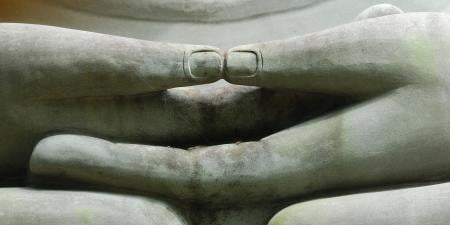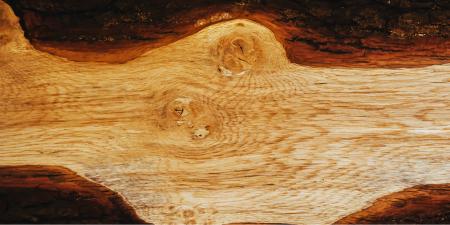Nearly 35 years ago a sensational fictionalized account of medical residency at a prestigious teaching hospital gave voice to the suffering and sad ironies inherent in medical training at the time. The House of God, by Samuel Shem (a pseudonym), gave many medical students, residents, and even practicing physicians permission to lament their often grueling professional lives, and offered useful vocabulary for that purpose [1]. Although Shem did not coin the term “turfing,” his use of it in the novel popularized it within medicine. Ask any medical student or resident what it means to “turf”—even three and a half decades later—and he or she will respond with a common understanding of transferring a patient to someone else’s care for reasons that are not strictly medical. Clearly something about the notion of “turfing” has staying power.
In this article, I will describe my own investigations into the use of this term, why it troubles my colleagues and me, and what we believe it represents. I will present arguments I heard that turfing was a practice unique to teaching institutions and that it would become less relevant—less necessary—over time as work-hour restrictions were introduced. And I will submit that, despite changes in the system of physicians’ training and practice, turfing still exists. I believe that the concept of turfing is less related to the work of taking care of patients and more emblematic of conflicts in medical students’ and physicians’ professional identity and character.
What Is Turfing and Why Should We Care?
Caring for patients is the bedrock of professional roles in medicine. So why would those who are presumably committed to taking care of patients try to get someone else to take certain patients off their hands? Of course, bona fide medical reasons justify transfers to other, more appropriate physicians. But in the case of a turf, the patient is one whose medical needs could be met by the initial physician. It’s just that the initial physician happens to prefer not to care for that patient. This is not a rarefied notion. A basic Internet search of “turfing” reveals this definition:
The act of foisting a patient to another service or hospital by manipulating the patient’s history so that the transfer appears appropriate [2].
The act of turfing a patient allows the initial physician to feel relieved, unburdened, perhaps even proud of dumping work onto another physician. The physicians who receive turfed patients may feel burdened, taken for granted, even abused and powerless. (Curiously, the slang term “a turf” refers to the patient, rather than to the physician whose actions caused the feelings of powerlessness and resentment [3].) In response they may find consolation and even satisfaction in having stepped up to the plate and cared for the turfed patient—although in reality they did not have the choice to decline.
Physicians who have received turfed patients believe they leave their resentments toward their turfing colleagues at the door when they begin to care for the patient [4]. But how can they be sure? What concerned my colleagues and me was that the decision to turf a patient seemed to be a decision to benefit the physician, not the patient. We were troubled by the seeming lack of regard for the primacy of patient welfare. We wondered if the negativity felt by the receiving physician towards the turfing physician was ever displaced onto the patient. It seemed crucial to us to assess whether patients could discern an interdisciplinary conflict based on the fact that some physicians did not appear to want to take care of them.
Studying Turfing
My colleagues Drs. Kathleen Dunn and Richard Frankel and I designed a study to interview patients regarding their hospital experiences [5]. We only approached patients who had been evaluated at admission by physicians from two or more services. Some of the patients were transferred from one service to another or declined by one service and accepted by another for appropriate medical and therapeutic reasons. But others fell into the “turfed” category. For example, an elderly woman with hypertension had fallen, broken her hip, and was scheduled for surgical pinning of the fracture. When the orthopedists evaluated her in the emergency room they declined to admit her to their service, stated she could go to a medical service, and agreed to follow her in consultation—which includes taking her to the operating room. This was not a woman with complex or difficult medical problems. She was elderly and had essential hypertension managed well on one medication.
Our study employed qualitative methods suited to exploring issues deeply to generate hypotheses for further investigation. A qualitative study such as ours cannot reach conclusions about the frequency of a phenomenon, but it can yield trustworthy insights into experiences and conditions. Our interviews were semistructured, meaning that we asked a few basic questions of every patient. However, when a patient brought up a unique topic, we explored it as far as the patient could.
We found that the interviews with patients who had been turfed were qualitatively different from those with patients whose doctors did not engage in conflict about patient “ownership.” Patients whose admissions were perceived as appropriate by their physicians offered uniformly positive comments. Patients who had been turfed had complaints and criticisms and picked up on some negativity, although they could not necessarily identify the precise conflicts. Patients who had been turfed were also able to speak well of their hospital care, but their comments were peppered with negativity.
We concluded that, despite their best intentions, physicians who receive turfed patients probably telegraph something to them. Perhaps these physicians are not completely capable of compartmentalizing the discontent they feel towards their turfing colleagues. If that is true, then interspecialty conflicts regarding duties to patients, colleagues, superiors, and self may have unintended adverse consequences on patient care. It may also be the case that feelings about caring for a turfed patient are not limited to physicians. Everyone on a team or hospital unit is busy; an additional assignment of questionable appropriateness may feel burdensome. These hypotheses merit further investigation.
Is Turfing Unique to Academic Medical Centers?
Criticisms leveled at the study of turfing include the point that, in private practice and community hospitals, physicians of all specialties gratefully accept referrals and consultation requests from colleagues. One’s professional and financial success depends on this. By contrast, in an academic medical center (particularly in the 1980s and 1990s) faculty physicians were typically salaried and did not derive financial incentives for taking on additional patients—nor did they experience financial penalties for declining patients. Fewer patients on a service allowed faculty to spend more time in their laboratories or outpatient practices.
Perhaps there were other good reasons to keep a team’s census down. Using the example above of the elderly woman with the broken hip, one might accept the orthopedists’ rationale that caring for fewer patients would allow them time to focus on those whose conditions were more complex or unstable. (The same, however, would be true of internists.) If an attending physician urged the residents to be extremely judicious in admitting patients to their service (i.e., to be “a wall”), the residents may readily internalize that message and convey it to the rest of the team. And if the differing financial set-ups truly distinguish private from academic medical settings, then the criticism that turfing is unique to academia sounds plausible.
And yet situations exist in which physicians in private practice turf patients to academic medical centers. Since 1986, federal legislation has outlawed “dumping” of unstable patients or women in labor from private hospitals to public ones based on the patients’ ability to pay [6]. In the nonacute setting, however, it is not unusual for private practices to decline patients with Medicare, Medicaid, or no medical insurance and refer them to the nearest academic center. Faced with a disproportionate share of un- and underinsured patients, academic centers suffer financially, and academic physicians feel burdened, even though, increasingly, they are compensated according to their productivity. Patients turfed for inability to pay endure overcrowded offices, long waits for appointments, and the indignity of being rejected by certain practices.
Other reasons exist to try to move the care of certain kinds of patients to other physicians.
Turfing refers to a physician’s culling sick patients out of the practice to make the utilization profiles look better—in other words, transferring the sickest patients to other physicians for care to look like a low-utilizing provider. Turfing can occur in any plan with an undue emphasis on low utilization [of medical services] and when the compensation and reward structure for physicians is heavily weighted toward individual physicians having low utilization profiles…. Turfing refers specifically to physicians trying to “dump” their high-cost patients on to other physicians [7].
Work-Hour Restrictions and Turfing
A second criticism of studying turfing pertains to student and resident work-hour restrictions in the United States. Since these restrictions designate a predictable time for medical students and housestaff to stop working and go home, one might think that any imperative an initial physician might feel to turf a patient would be diminished by the predictability of the end of his or her own shift. In this new system, an additional patient no longer represents quite the same burden as he or she did when work hours were open-ended. For the same reason, receiving a turfed patient also should not feel as burdensome as it did when the end of one’s workday was unpredictable. If these suppositions are true, then one would expect turfing to decrease over time.
Nevertheless, those who receive turfed patients care for more patients than they might otherwise, potentially creating difficulty wrapping things up at the end of a shift, and a higher census necessitates a larger and more complex handoff to whomever comes in next. Despite the absence of hard data, anecdotal reports substantiate that turfing persists. Attending physicians are not subject to work-hour restrictions in the United States. They go home when their work is done, not when they have worked a prescribed number of hours. So to the extent that attending physicians support the turfing of patients from their own services, the practice remains.
Ethical Issues in Turfing
I contend that the concept of turfing is less related to the work of taking care of patients and more related to conflicts regarding professional identity. Some members of certain specialties have adopted into their professional identities—and have become known for assuming—the authority to make patient disposition decisions based on nonmedical related criteria. They may even value and cultivate that professional identity, as suggested in the example of the resident “wall” above.
By contrast, recipients of turfed patients assume a professional identity of passive accepters. This is not an identity they relish [8]. Some recipients may find professional virtue in caring for a patient other physicians do not want; altruism, compassion, and conscientiousness are among the many virtues that are expected in health care professionals. But physicians who receive turfed patients may balk at feeling that their professional role is to do the bidding of other physicians. When a patient is turfed, the interdisciplinary relationships take on the characteristics of a power play. In medicine, duties to patients are paramount, and yet in a turfing situation one group of physicians appears to consider themselves in some ways exempt from that duty.
Other professional responsibilities, including duties to one’s teammates and colleagues, to the mission of one’s institution, to one’s professional code of conduct, to society, and to oneself and loved ones, are expected of physicians and, hence, emphasized. If it were possible to honor all these duties simultaneously, physicians might not feel the need to turf patients to others. More commonly, though, a physician feels pulled apart by competing duties. For example, how does one demonstrate a duty to patient care (assuming the patient is medically appropriate) when one also feels a duty to comply with the wishes of a superior, or behave as a “team player,” or prepare for an exam by studying or sleeping?
Part of what exemplifies a physician’s or medical student’s professional character is how he or she prioritizes these worthwhile but conflicting duties.
The bread and butter of morality in medicine…is in acting rightly when the right path is clear before us but other pressing needs and desires pull us away from that path in the midst of day-to-day medical routine…. Professionalism in training means taking the time and making the effort to do the right thing when the path of least resistance would be to take an easier way out, allowing the demands of, say, the next half hour, or one’s hunger or anxiety or fatigue or desire to leave the hospital, to override moral considerations [9].
Rather than pointing fingers at physicians who turf or comforting the overworked physicians and students who receive turfed patients, medical educators, administrators, faculty, and trainees can respond in more productive ways. Here are some ideas.
- Institutional leaders can agree among themselves to act as role models for medically sound patient dispositions. Some patients who are critically ill or whose care is more complex than that of others require careful triaging at the faculty level.
- Patients whose care is particularly complex can be treated collegially and collaboratively by more than one specialist. If the elderly woman with the fractured hip had had more challenging medical problems, it would have been appropriate for the medicine service to care for her and work closely with the orthopedists during the pre- and postsurgical course. Otherwise, a general medical consultant could serve as a sufficiently supportive and involved resource so that the orthopedists would feel confident about keeping her on their service.
- Departmental educational conferences could provide opportunities to examine subspecialty professional views of medical care and articulate what it means to be a health care professional. The notion that everyone who attended medical school should be able to deliver the same basic care to any patient is a myth that fuels interdisciplinary resentments.
- Students and residents should freely solicit the advice of chief residents, attending physicians, and ethics faculty about how to choose between worthwhile but conflicting duties and to reason through and anticipate the consequences of various choices.
Inculcating professionalism in medical training is a task that “may be harder than we think and may require of medical educators a degree of personal virtue and involvement with trainees that most of us perhaps do not really contemplate, let alone achieve” [8]. Doing the right thing is harder when a novice professional believes he or she must take matters into his or her own hands. Rather, it becomes easier when the novice professional turns to leaders, mentors, and advisors—in other words, experts—for guidance that will build a capacity to act professionally going forward.
References
-
Shem S. House of God. Westport, CT: Richard Marek Publishers; 1978.
-
Turfing. Segen’s Medical Dictionary. http://medical-dictionary.thefreedictionary.com/turfing. Accessed February 12, 2012.
- Caldicott CV. “Sweeping up after the parade:” professional, ethical, and patient care implications of “turfing”. Perspect Biol Med. 2007;50(1):136-149.
- Stern DT, Caldicott CV. Turfing: patients in the balance. J Gen Intern Med. 1999;14(4):243-248.
- Caldicott CV, Dunn KA, Frankel RM. Can patients tell when they are unwanted? “Turfing” in residency training. Patient Educ Couns. 2005;56(1):104-111.
-
Consolidated Omnibus Budget Reconciliation Act (COBRA) of 1985, 42 USC 1395dd section 1867. http://www.ssa.gov/OP_Home/ssact/title18/1867.htm. Accessed April 19, 2012.
-
Kongstvedt PR. The Managed Health Care Handbook. 4th ed. Gaithersburg, MD: Aspen Publishers; 2001:167-168.
-
Caldicott CV, Stern DT. “Turfing” narratives and the ideology of residency. Acad Med. 1997;72(10 Suppl 1):S54-S56.
-
Huddle TS. Viewpoint: teaching professionalism: is medical morality a competency? Acad Med. 2005;80(10):885-891.



